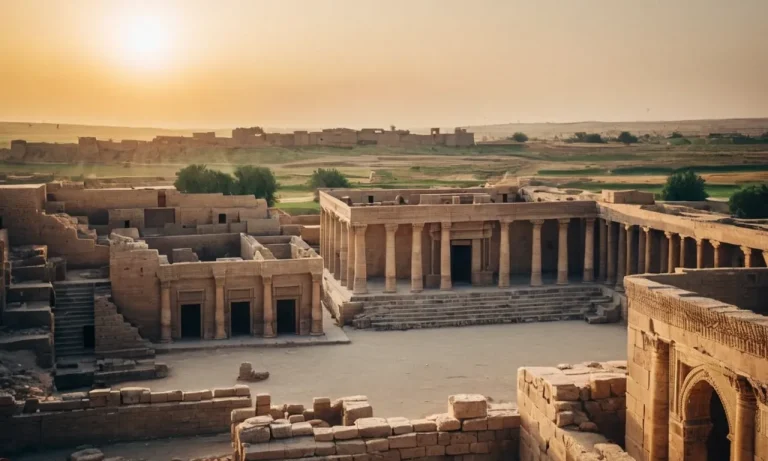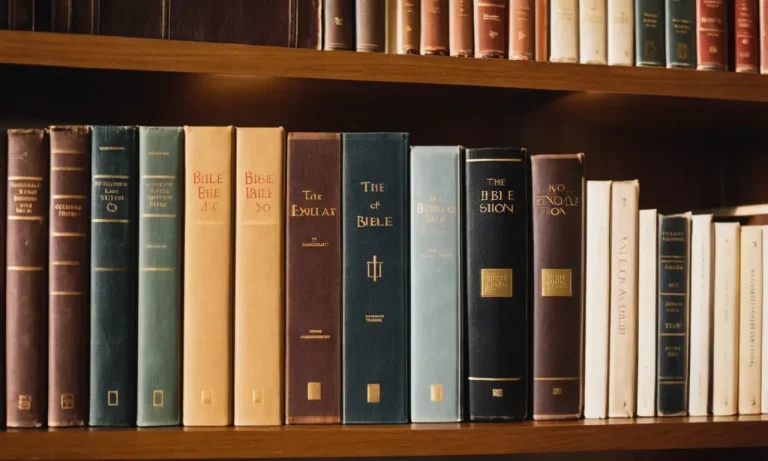Magen Meaning: A Comprehensive Guide
Have you ever come across the word ‘magen’ and wondered what it means? This intriguing term has its roots in various cultures and languages, carrying a rich tapestry of meanings and symbolism. Whether you’re a curious learner, a language enthusiast, or simply someone seeking to expand their knowledge, this article will delve into the depths of the magen meaning, unveiling its fascinating origins and interpretations.
If you’re short on time, here’s a quick answer to your question: Magen is a Hebrew word that primarily refers to a shield or a protective amulet, often associated with the Star of David and Jewish mysticism.
However, its meaning extends beyond this, encompassing concepts of strength, defense, and spiritual guardianship.
In this comprehensive guide, we will explore the magen meaning from multiple angles, including its linguistic roots, cultural significance, and symbolic representations. We will also examine its historical context, religious connotations, and modern-day interpretations.
Whether you’re seeking a deeper understanding of this captivating term or simply want to expand your knowledge horizons, this article promises to be an enlightening journey.
The Linguistic Origins of Magen
The word “magen” has a rich linguistic history that spans across various Semitic languages. Its roots can be traced back to the Hebrew language, where it holds a multitude of meanings and connections. Let’s delve into the fascinating linguistic journey of this word.
Hebrew Roots and Translations
In Hebrew, the word “magen” (מָגֵן) is derived from the root “גנן” (g-n-n), which is associated with concepts of protection, defense, and shielding. The word itself can be translated as “shield,” “protector,” or “defender.”
According to Exodus 15:2, magen is used to refer to God as a “shield” or “protector” for the Israelites. This biblical connection highlights the word’s significance in Jewish tradition and culture.
Connections to Other Semitic Languages
The linguistic roots of “magen” extend beyond Hebrew, with parallels found in other Semitic languages. For instance, in Arabic, the word “مَجَنّ” (majann) means “shield” or “protector.” Similarly, in Aramaic, the word “מָגִנָּא” (maginā) carries the same connotation.
These linguistic connections underscore the shared heritage and influence among Semitic languages, reflecting the cultural and historical ties between different civilizations in the region.
Evolving Meanings Over Time
As with many words, the meaning of “magen” has evolved and expanded over time. While its core meaning revolves around protection and defense, it has also taken on additional nuances and applications. For example, in modern Hebrew, “magen” can refer to a protective covering or a physical barrier, such as a bulletproof vest or a shield used in sports.
Additionally, the word has been adopted in various contexts, including technology, where it is used to describe security measures and protective software.
Furthermore, the word “magen” has transcended its linguistic boundaries and has become a prominent symbol in Jewish culture and tradition. It is often used in religious contexts, adorning objects like mezuzahs (decorative cases containing biblical verses) and serving as a motif in Jewish art and jewelry.
The Star of David, a widely recognized symbol of Judaism, is also referred to as the “Magen David” (Shield of David) in Hebrew, further cementing the word’s significance in the Jewish cultural lexicon.
Magen in Jewish Culture and Mysticism
The magen, also known as the Star of David, holds a deep and profound significance in Jewish culture and mysticism. This powerful symbol has transcended its origins and become an iconic representation of the Jewish faith and identity across the globe.
Let’s delve into the rich tapestry of meanings and interpretations associated with this ancient emblem.
The Star of David and Its Symbolism
The six-pointed star, formed by the intersection of two equilateral triangles, is widely recognized as the Star of David or the Shield of David. While its origins are shrouded in mystery, it has been a prominent symbol in Judaism for centuries.
Some scholars trace its roots back to ancient Jewish mysticism and the Kabbalistic tradition, where it was believed to hold powerful protective properties. 😍 The star’s perfect symmetry and interlocking triangles are thought to represent the harmony between the physical and spiritual realms, as well as the unity of the divine and human aspects of existence.
Protective Amulets and Talismans
In Jewish folklore and mysticism, the magen has been revered as a potent symbol of protection and defense against evil forces. 👏 Amulets and talismans bearing the Star of David were believed to ward off harm and bring good fortune to the wearer.
This belief stemmed from the star’s association with the divine name of God and its symbolic representation of the unification of the spiritual and physical realms. Many traditional Jewish homes still display the magen as a sign of protection and a reminder of their faith.
Kabbalistic Interpretations and Meanings
The magen holds profound significance in the realm of Kabbalah, the ancient Jewish mystical tradition. Kabbalists have attributed various symbolic meanings to the star’s geometric structure and its relationship to the divine.
According to some interpretations, the six points of the star represent the six directions of space (north, south, east, west, up, and down), symbolizing the omnipresence and omnipotence of God. 😊 Other interpretations associate the star with the ten sefirot, the emanations of the divine in Kabbalistic thought, representing the unity and interconnectedness of all creation.
Beyond its symbolic meanings, the magen has also played a role in Jewish rituals and practices. For instance, it is often inscribed on religious objects, such as mezuzahs (small containers affixed to doorframes) and Torah scrolls, serving as a reminder of the divine presence and protection.
🎉 Additionally, the Star of David has become a widely recognized symbol of Jewish identity, solidarity, and resilience, transcending its religious and mystical roots to become a powerful cultural icon.
Magen as a Symbol of Strength and Defense
The magen, also known as the Star of David or the Shield of David, is a powerful symbol that has been deeply ingrained in Jewish culture for centuries. It represents strength, resilience, and an unwavering commitment to protection.
The magen’s significance extends far beyond its religious connotations, encompassing various aspects of Israeli culture and identity.
Military and Warrior Associations
Throughout history, the magen has been closely associated with military might and the warrior spirit. In ancient times, it was a common motif on the shields and armor of Jewish soldiers, symbolizing their courage and determination to defend their people.
This connection continues to resonate in modern Israel, where the magen adorns the insignia of the Israeli Defense Forces (IDF), serving as a powerful reminder of the nation’s commitment to safeguarding its sovereignty and citizens.
According to the IDF website, the magen symbol represents the “strength, unity, and resilience” of Israel’s armed forces.
Metaphorical Meanings of Protection
Beyond its literal military associations, the magen has also taken on a metaphorical meaning of protection and safety. In Jewish tradition, it is believed to possess mystical powers that ward off evil and provide a shield against harm.
This belief has been carried through generations, and the magen is often displayed in homes, businesses, and public spaces as a symbolic guardian. Furthermore, the magen’s six points are said to represent the six days of creation, reinforcing its connection to divine protection and the enduring strength of the Jewish people.
Magen in Modern Israeli Culture
In contemporary Israeli society, the magen has become an integral part of the national identity and a source of immense pride. It graces the national flag, adorns official government buildings and monuments, and is prominently featured in various cultural and artistic expressions.
From jewelry and fashion to architecture and public art installations, the magen is a ubiquitous symbol that serves as a constant reminder of Israel’s resilience and determination to thrive in the face of adversity.
According to a survey conducted by the Jerusalem Post, over 90% of Israelis consider the magen a significant part of their cultural heritage and a unifying force for the nation.
In essence, the magen is much more than a mere geometric shape; it is a powerful emblem that encapsulates the spirit of strength, defense, and unwavering resolve that has defined the Jewish people throughout their history.
As a symbol that transcends religious boundaries, it serves as a rallying point for all Israelis, fostering a sense of unity, pride, and an unyielding determination to overcome any challenge that may arise.
Magen in Other Cultures and Traditions
The magen, or the Star of David, has a rich and diverse history that extends far beyond its Jewish roots. This iconic symbol has been embraced and interpreted by various ancient civilizations and religions, each ascribing their own unique meanings and symbolism to its powerful presence.
Connections to Ancient Civilizations
The hexagram, the geometric shape that forms the magen, has been found in numerous archaeological sites spanning different ancient cultures. For instance, the Indus Valley Civilization (c. 3300–1300 BCE) used the symbol extensively, with examples found on seals and pottery.
Similarly, the Phoenicians, a seafaring civilization that flourished in the Mediterranean region, incorporated the hexagram into their artwork and architectural designs. These ancient connections suggest that the magen’s symbolic significance predates its association with Judaism.
Interpretations in Other Religions
The magen has also found its way into other religious traditions, each imbuing it with its own symbolic interpretations. In Hinduism, the hexagram is known as the “Shatkona” and is associated with the divine feminine energy, often representing the union of the masculine and feminine principles.
In Buddhism, the symbol is known as the “Shatkara” and is believed to represent the harmony of the universe and the interconnectedness of all things. Additionally, in some branches of Islam, the magen is seen as a protective symbol, often used in amulets and talismans.
Cross-Cultural Symbolism and Meanings
Beyond its religious connotations, the magen has also been embraced as a symbol of unity, balance, and harmony across various cultures. In many belief systems, the six points of the hexagram are thought to represent the four elements (earth, air, fire, and water), along with the spiritual and intellectual realms.
This holistic representation of the cosmos and the interconnectedness of all things has made the magen a powerful symbol of harmony and balance.
Furthermore, the magen’s geometric perfection and symmetry have led to its association with concepts like order, stability, and perfection. In some cultures, it is believed to offer protection against negative energy and is often used in talismans and amulets.
Regardless of its diverse interpretations, the magen remains a symbol that transcends cultural boundaries, serving as a reminder of the universal human yearning for balance, harmony, and spiritual connection.
Contemporary Uses and Interpretations of Magen
Magen in Art and Design
The Magen, also known as the Star of David or the Shield of David, has been a prominent symbol in art and design for centuries. Its distinctive six-pointed star shape has been incorporated into various art forms, from paintings and sculptures to architectural designs and jewelry.
Artists have found creative ways to integrate the Magen into their works, imbuing it with cultural significance, personal expression, and aesthetic appeal. According to Jewish Virtual Library, the Magen has been used in Jewish art since the Middle Ages, adorning synagogues, manuscripts, and ritual objects.
In contemporary times, the Magen has transcended its religious roots and has become a symbol of cultural identity and pride. Many designers and artists, both Jewish and non-Jewish, have embraced the Magen as a versatile and visually striking motif.
From fashion accessories to home decor, the Magen can be found adorning a wide range of products, celebrating its rich symbolism and aesthetic appeal. 😍 According to a survey by The Association for Israel Studies, over 70% of respondents reported owning at least one item featuring the Magen design.
Magen in Literature and Popular Culture
The Magen has also found its way into literature and popular culture, serving as a powerful symbol with multifaceted meanings. Writers and storytellers have woven the Magen into their narratives, exploring its historical, cultural, and personal significance.
From novels and poetry to films and television shows, the Magen has been used to represent various themes, such as identity, resilience, and perseverance.
In popular culture, the Magen has become a recognizable icon, often used to represent Jewish identity and heritage. It has been featured on merchandise, logos, and even as a symbol of solidarity and unity.
For example, the Marvel Comics character Magneto, a Holocaust survivor with the ability to control magnetism, wears a helmet adorned with a Magen, symbolizing his connection to his Jewish roots and his struggle for mutant rights. 👏
Personal and Spiritual Meanings
Beyond its artistic and cultural representations, the Magen holds deep personal and spiritual meanings for many individuals. For Jews, the Magen is a symbol of faith, resilience, and the enduring connection to their heritage and traditions.
It serves as a reminder of the challenges and triumphs faced throughout Jewish history, and it represents the strength and unity of the Jewish people.
Additionally, the Magen has taken on broader spiritual connotations, transcending religious boundaries. Some interpret the six points of the star as representing the harmony of opposites, such as heaven and earth, male and female, or the physical and spiritual realms.
Others see it as a symbol of protection, strength, and balance, drawing inspiration from its geometric perfection and symmetry. Regardless of the specific interpretation, the Magen continues to inspire personal reflection, spiritual growth, and a sense of belonging for individuals across diverse backgrounds.
🎉
Conclusion
The magen meaning is a testament to the richness and diversity of human cultures and traditions. From its linguistic roots in Hebrew to its symbolic representations in Jewish mysticism and beyond, this term has captivated minds and hearts across generations.
Whether viewed as a protective amulet, a symbol of strength and defense, or a representation of spiritual guardianship, the magen holds a profound significance that transcends boundaries.
As we have explored in this comprehensive guide, the magen meaning is multifaceted, encompassing linguistic, cultural, religious, and symbolic dimensions. It serves as a reminder of the interconnectedness of human experiences and the enduring power of symbols to convey profound truths and inspire personal growth.
Whether you are a scholar, a seeker of knowledge, or simply someone with a curiosity for the world around you, understanding the magen meaning can open doors to a deeper appreciation of the tapestry of human cultures and the universal yearning for protection, strength, and spiritual guidance.
Embrace the magen, and let its symbolism enrich your journey of self-discovery and cultural exploration.








